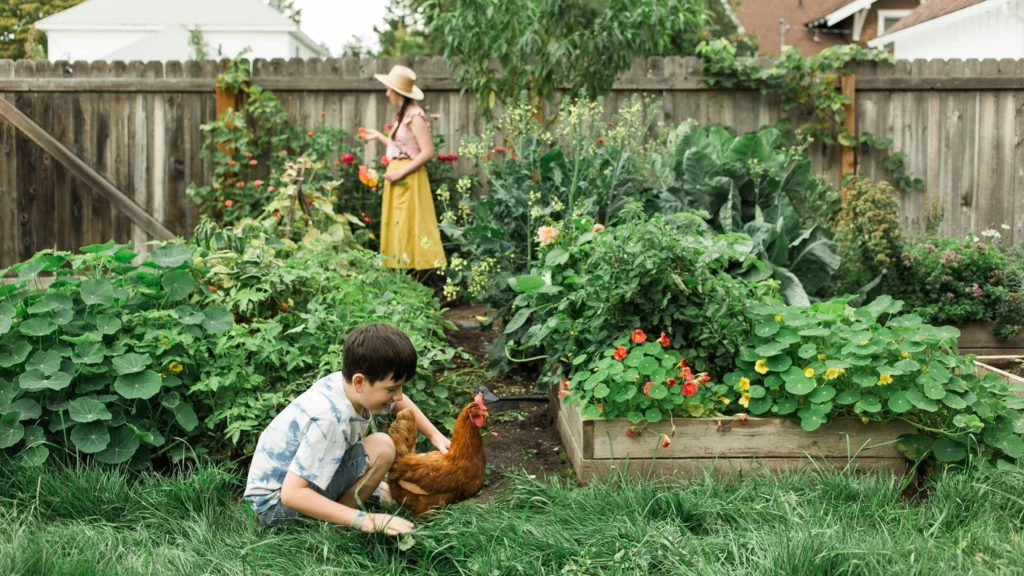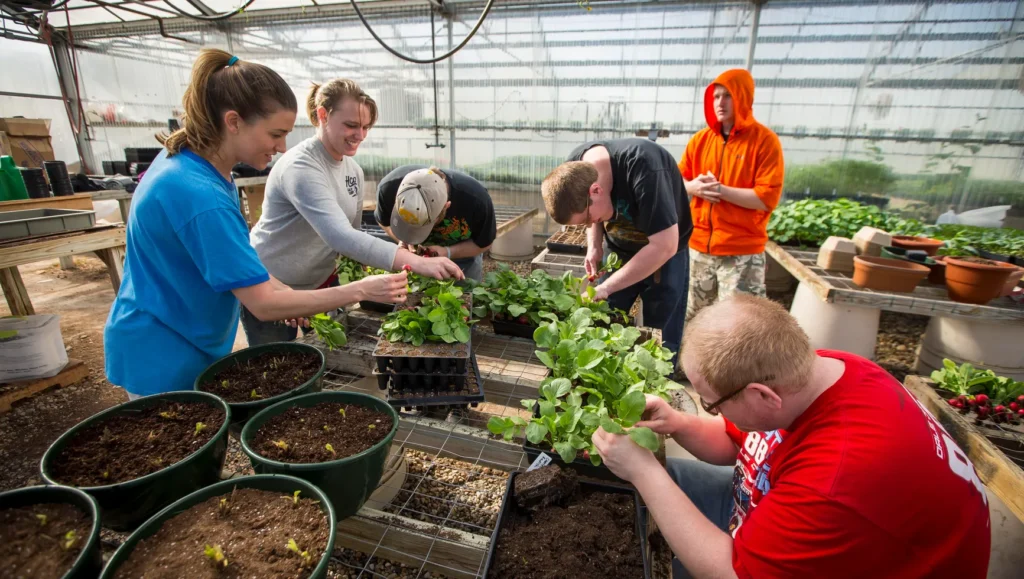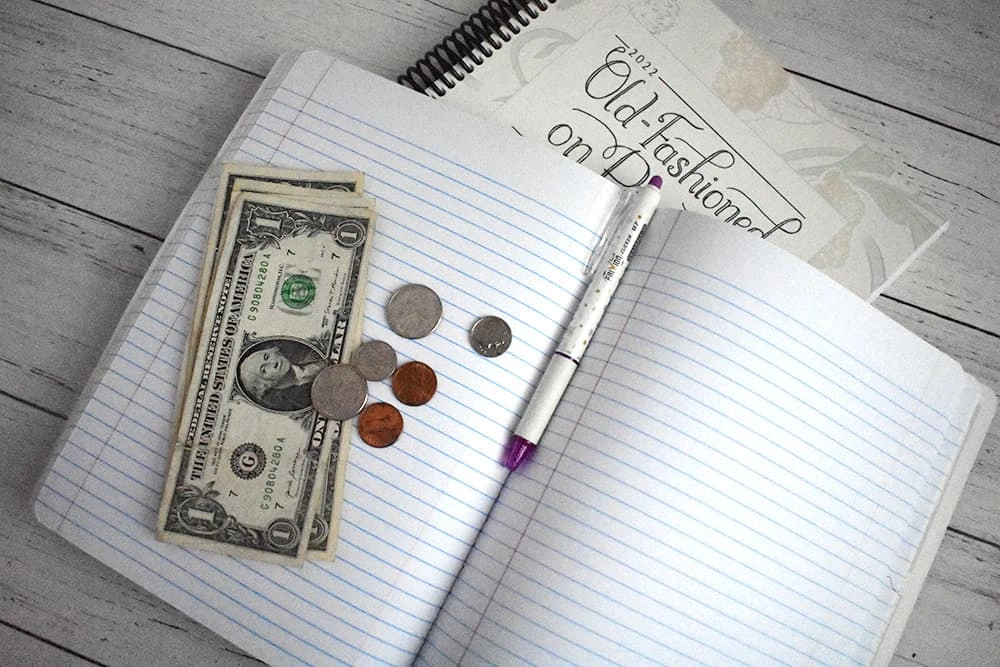You have probably heard the saying “Rome Wasn’t Built in a Day”, well I’m here to tell you a debt-free homestead isn’t usually built in a day either.
Listen, I’m gonna be real with you from the jump. Building a debt-free homestead is probably one of the most rewarding things you’ll ever do, but it’s also going to test every ounce of patience and discipline you thought you had. And then some.
When we started this journey, I was that person scrolling through Pinterest at midnight, pinning elaborate chicken coops and dreaming about vast vegetable gardens while simultaneously stressing about how we were going to pay for any of it. The urge to throw everything on a credit card and figure it out later was real. But here’s what I learned the hard way: debt and homesteading don’t play nice together.
You know what’s harder than building a homestead? Building a homestead while drowning in monthly payments that suck away every extra dollar you could be investing in your land, your animals, or your future. I’ve watched too many homesteading dreams get crushed under the weight of financial stress, and I’m not about to let that happen to you.
So grab your favorite mug—preferably filled with something you grew, roasted, or fermented yourself—and let me walk you through the exact framework we used to build our debt-free homestead. This isn’t theory. This is straight from the trenches, mud-on-the-boots reality.
Tips for Building a Debt-Free Homestead
Before we dive into the specifics, let me set the record straight about what “debt-free homesteading” actually means. I’m not talking about never borrowing money or living like a hermit. I’m talking about being strategic, intentional, and refusing to let debt dictate your homestead timeline.
The goal here is simple: build the homestead you actually want without mortgaging your future to get there. Because trust me, there’s nothing quite like the feeling of knowing that every egg your chickens lay, every tomato you harvest, and every improvement you make belongs to you completely.
Tip #1: Start with a Clean Slate
Alright, let’s address the elephant in the room first. If you’re carrying debt right now—credit cards, car loans, student loans, whatever—we need to deal with that before you start planning your chicken coop.
I know, I know. You want to jump straight to the fun stuff. But here’s the brutal truth: trying to build a homestead while servicing debt is like trying to fill a bucket with holes in the bottom. You can pour all the money you want into it, but you’ll never get ahead.
When we started our homestead journey, we had $32,000 in debt. Car loans, credit cards, the whole mess. It felt overwhelming, but we made the decision to tackle it head-on using Dave Ramsey’s debt snowball method. We lived like broke college students for two years, sold stuff we didn’t need, and threw every extra penny at our debt.
Was it fun? Absolutely not. Did it suck to drive a beat-up Honda while our friends were leasing new trucks? You bet. But the day we made that final payment and became truly debt-free—that was the day our homestead dreams became financially possible.
Here’s your action step: list every debt you have, smallest to largest. Attack the smallest one first while making minimum payments on everything else. When the smallest debt is gone, roll that payment into the next smallest debt. Rinse and repeat until you’re free.
Tip #2: Create Your Homesteading Plan

Planning isn’t sexy, but it’s the difference between a successful homestead and an expensive hobby that bleeds money.
You need three levels of planning: one year, five years, and ten years. Yes, I said ten years. If that sounds crazy, remember that fruit trees take years to mature, establishing pastures is a multi-season process, and building soil health doesn’t happen overnight.
Your one-year plan should focus on foundation projects: basic infrastructure, soil preparation, and maybe your first small livestock. Your five-year plan might include orchard establishment, larger animals, and value-added enterprises. Your ten-year plan is where you dream big—that beautiful barn, extensive market gardens, or whatever your “someday” vision looks like.
Here’s the critical part: assign realistic budgets to each phase. Research actual costs, not Pinterest fantasy costs. That adorable chicken coop you saw online might look like it costs $200 in materials, but by the time you factor in hardware, proper ventilation, and predator-proofing, you’re looking at $600 minimum.
I keep all of this in a dedicated homestead planner because my brain can’t hold all those moving pieces. Having everything written down keeps me focused and prevents those expensive impulse purchases that derail budgets.
Tip #3: Always Be Prepared for the Unexpected
Murphy’s Law is alive and well on the homestead. If something can go wrong, it will—usually at the worst possible time and in the most expensive way.
Your fence will break during a storm. Your best milk cow will need emergency vet care. Your well pump will die on the hottest day of summer. These aren’t pessimistic predictions; they’re Tuesday on a homestead.
That’s why you need an emergency fund specifically for homestead disasters. This is separate from your regular emergency fund for household expenses. Start with $1,000 and build it up to cover 3-6 months of your typical homestead operating expenses.
Last summer, our main water line burst underground, right in the middle of the vegetable garden. The repair cost $1,800 and had to be done immediately—we couldn’t exactly let the animals go without water. Because we had our emergency fund, this was an inconvenience instead of a financial catastrophe.
Open a separate savings account specifically for homestead emergencies. Even if you can only put $25 a month into it, start somewhere. You’ll sleep better knowing you’re prepared.
Tip #4: Always Do Your Research
This is where a lot of new homesteaders get absolutely crushed financially. They see a YouTube video about raising sheep and think, “How hard could it be?” Then they discover that proper fencing costs $3 per foot, hay is $8 per bale, and the vet bill for a sick lamb is $200.
Before you commit to any new venture, research the total cost of ownership. Not just the cute, Instagram-worthy startup costs—the real, ongoing, this-is-what-it-actually-costs numbers.
Want to raise meat chickens? Calculate feed costs for 8 weeks, brooder setup, processing fees, and your time investment. Still profitable? Great. Turns out you’d be paying $25 per chicken for meat you could buy for $5? Maybe start with a garden instead.
I learned this lesson the expensive way with goats. I researched goat prices and basic fencing but completely underestimated ongoing feed costs and how often goats need their hooves trimmed. What I thought would be a $500 venture turned into a $2,000 first-year investment.
Quality matters too, but it doesn’t always mean expensive. Sometimes the budget option is actually fine—like using cattle panels instead of traditional fencing. Sometimes it’s not—like buying the cheapest possible coop that falls apart in the first windstorm. Learn to tell the difference.
Tip #5: Build a Budget You Can Live With

If you don’t know where your money goes, you can’t control where it goes. And if you can’t control your money, you can’t build a debt-free homestead.
I’m a big fan of zero-based budgeting for homestead planning. Every dollar gets assigned a job before you spend it. Regular expenses, savings, and yes—homestead projects. If it’s not in the budget, it doesn’t happen. Period.
Here’s how this works in practice: Let’s say you bring home $4,000 per month. After essential expenses (housing, utilities, food, transportation), you have $800 left. Maybe $300 goes to regular savings, $200 to your emergency fund, and $300 to homestead projects. That’s your homestead budget for the month.
Want that $600 chicken coop? You either save for two months or find a way to do it cheaper. Want to impulse-buy that cute pig at the farmers market? Too bad—it’s not in the budget.
This might sound restrictive, but it’s actually liberating. When you know exactly what you can afford to spend on homestead projects, you can plan accordingly and make progress without the guilt or financial stress.
Tip #6: Live Within Your Means to Build a Debt-Free Homestead
This one’s simple in concept but brutal in execution: only spend money you actually have.
I don’t care how good the deal is, how perfect the timing seems, or how much you “need” that particular animal or tool. If the money isn’t sitting in your bank account right now, ready to be spent, you can’t afford it.
This is where most homesteading dreams go to die. People see an opportunity—maybe a great deal on a tractor, or someone selling their entire flock for cheap—and they justify putting it on credit because it’s such a good deal.
Here’s the thing about “deals”: there will always be another one. But debt? That follows you home and camps out in your financial life until you deal with it.
Last year, I found a beautiful greenhouse on Craigslist for half the retail price. I wanted it so badly I could taste it. But we were in the middle of a major barn renovation, and the money wasn’t there. You know what? Three months later, I found an even better greenhouse for the same price when we actually had the cash.
Living within your means requires patience, and patience is not fun. But neither is making payments on homestead purchases long after the excitement has worn off.
Tip #7: Use What You Have and Do What You Can Yourself
One of the most beautiful things about homesteading is that it connects you with skills your grandparents took for granted. Learning to do things yourself isn’t just cost-effective—it’s empowering.
Can you build a professional-grade chicken coop without any construction experience? Maybe not. Can you build a functional, safe coop that keeps your chickens happy and predator-free? Absolutely.
I’ve built our entire goat fence system using YouTube University and a lot of trial and error. Is it perfect? No. Does it work? Yes. Did it cost a fraction of hiring someone? You bet.
But here’s the key: be honest about your skill level and the time you have available. Some things are worth learning to do yourself. Others are worth paying for. A basic garden shed? DIY project. Electrical work for your barn? Call a professional.
Start with simple projects and build your skills over time. Every project you complete yourself is money in your pocket and knowledge in your toolbox for the next project.
Tip #8: Network and Cultivate Community

Homesteading can feel isolating, especially when you’re trying to do it debt-free and can’t just throw money at every problem. That’s where community becomes invaluable.
Find your people. Whether it’s online homesteading groups, local grange halls, or neighbors who share your values, invest in relationships with people who understand what you’re trying to accomplish.
Community provides more than moral support—it provides practical benefits. Need to borrow a tractor for a day? Trade work with a neighbor. Have extra zucchini? Swap for someone’s surplus eggs. Need advice on dealing with a sick animal? Someone in your network has been there.
I’ve bartered graphic design work for hay, traded surplus vegetables for meat processing, and borrowed more tools than I can count. These relationships have saved us thousands of dollars over the years.
But here’s the important part: be a giver, not just a taker. Show up when your neighbors need help. Share your knowledge and resources. Community only works when everyone contributes.
Tip #9: Get Creative When Building Your Debt-Free Homestead
Your homestead doesn’t just have to cost money—it can make money too. The key is thinking creatively about what you can produce, create, or offer that others would pay for.
Start simple: eggs, vegetables, herbs. As you develop skills and infrastructure, expand into value-added products. Maybe that’s homemade soap from your goat’s milk, or preserves from your fruit trees, or woodworking projects from your property’s timber.
We started selling surplus eggs to neighbors for $3 per dozen. Nothing fancy, just clean eggs in reused cartons. That $20-30 per week helped fund our next homestead project. As our flock grew, so did our egg sales. Now that small side income covers all our chicken-related expenses.
The key is to avoid the trap of spending more money than you make on your side enterprises. If you’re buying $200 worth of craft supplies to make $150 worth of products, you’re not helping your debt-free homestead—you’re hindering it.
Tip #10: Learn to Enjoy Where You Are on Your Journey
This might be the hardest tip of all, but it’s absolutely critical for your financial and mental health: stop comparing your beginning to someone else’s middle.
Social media makes this especially brutal. You’re looking at your first-year garden disasters while following accounts that show picture-perfect homesteads built over decades. You’re stressing about your makeshift chicken coop while someone else posts about their beautiful custom barn.
Here’s what those posts don’t show: the years of saving, the debt they might be carrying, the failed projects, the mistakes, the ordinary Tuesday reality of homestead life.
Your homestead might not look like a magazine spread right now, and that’s perfectly fine. What matters is that you’re building something sustainable, something you can actually afford, something that’s truly yours.
Every small step forward is progress. That first successful vegetable garden. Your first dozen eggs. The satisfaction of fixing something yourself instead of calling a repair service. These moments add up to something bigger than any Instagram-worthy barn.
Start Building Your Debt-Free Homestead
Building a debt-free homestead isn’t about deprivation—it’s about intention. It’s about choosing to build slowly and sustainably instead of fast and foolishly. It’s about creating something that serves your family for generations instead of just looking good for a few years.
Will it take longer than financing everything? Yes. Will it be harder than putting it all on credit cards? Absolutely. Will it be worth it when you’re sitting on your own land, surrounded by animals and gardens that are truly yours, with no monthly payments to worry about? Every single day.
The homestead you build debt-free won’t just feed your family—it’ll give you peace of mind. And in a world full of financial uncertainty, that peace of mind is priceless.
Now stop reading about building a debt-free homestead and go build one. Your future self—and your bank account…..will thank you.


Leave a Reply